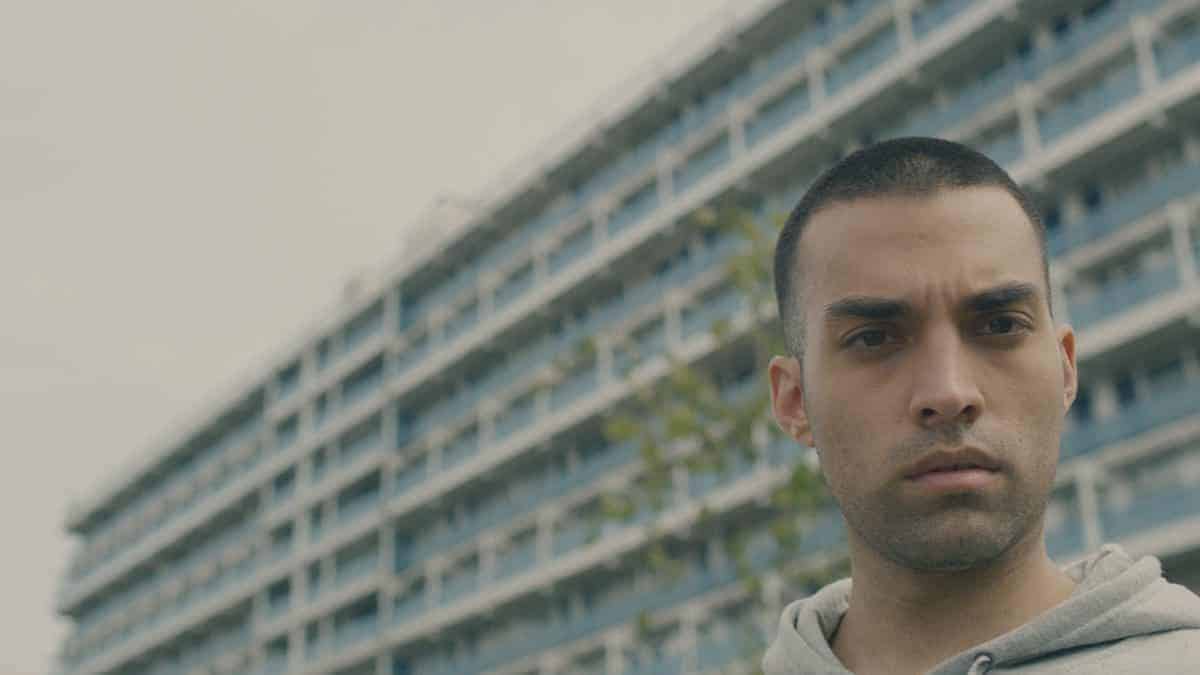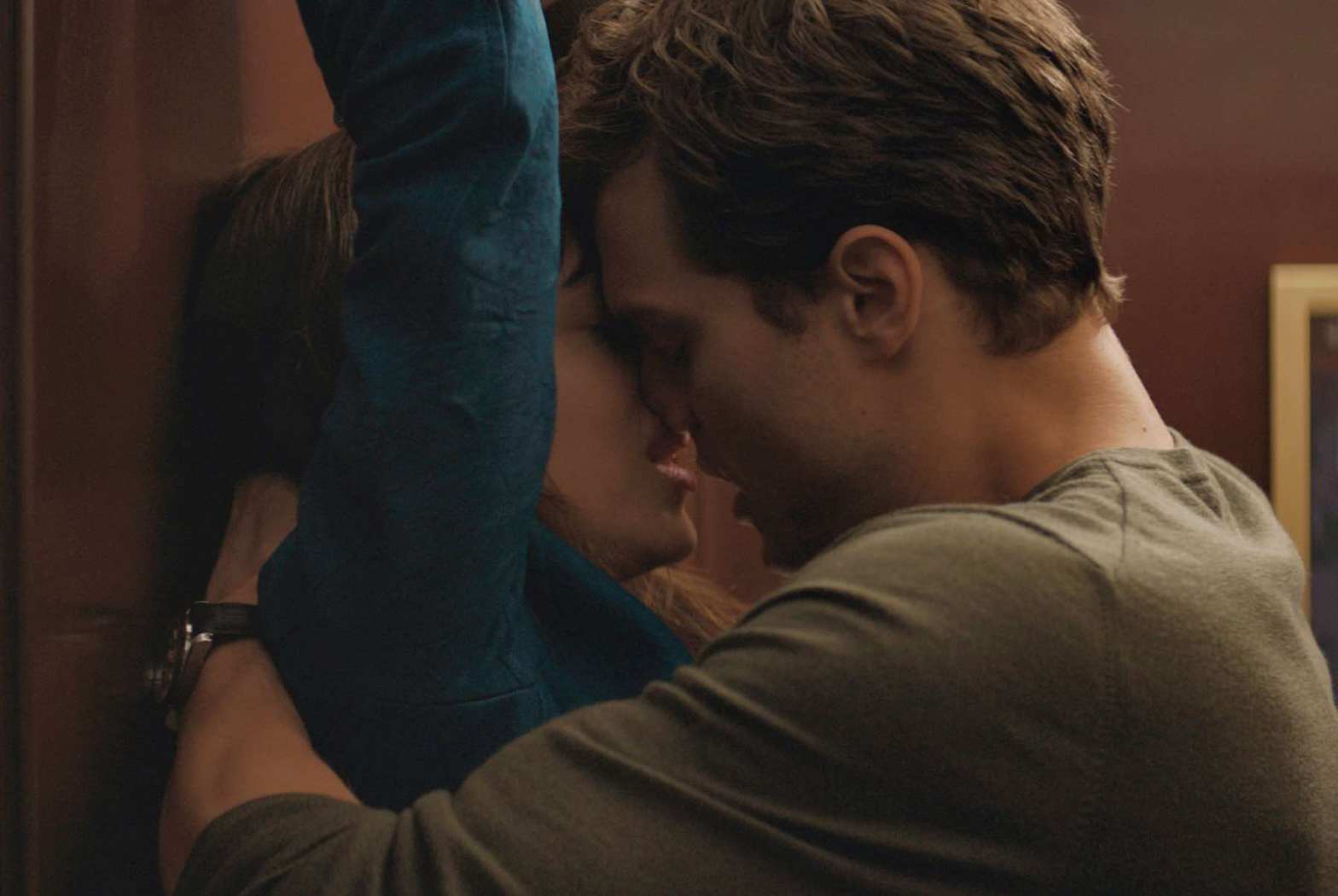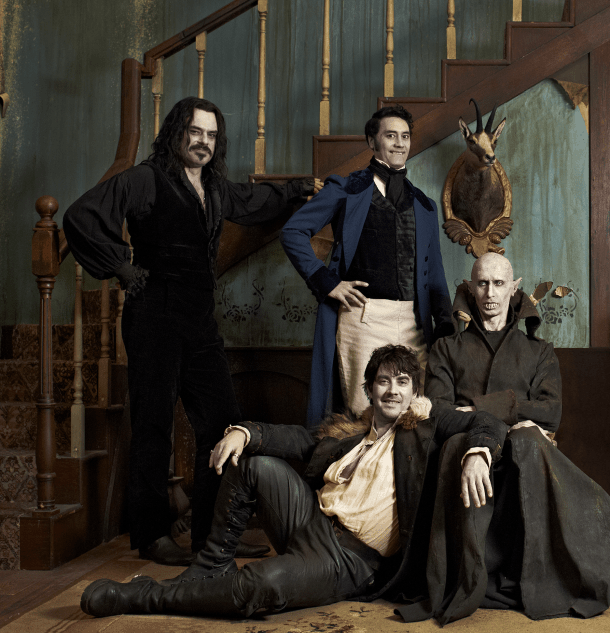Sally El Hosaini’s directorial debut, My Brother the Devil, is a touching and sensitive story of two Arab brothers in Hackney, London. During her sojourn in San Francisco as the San Francisco Film Society’s Artist-in-Residence, I sat down with El Hosaini to discuss her writing process, working with non-actors, her shoot, and her approach to the film’s aesthetic. Here are some of the highlights of our conversation.
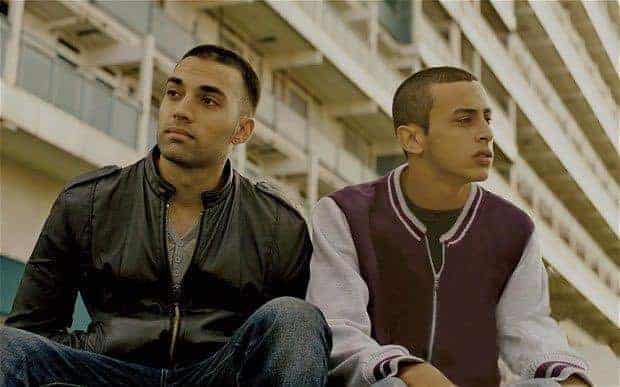
Sally El Hosaini’s directorial debut, My Brother the Devil, is a touching and sensitive story of two Arab brothers in Hackney, London. The eldest, Rashid (James Floyd) is already ensconced in gang life, and he wants desperately to keep he younger brother Mo (Fady Elsayed), who idolizes him, from making the same mistake. Just when you think you’ve got the film nailed as a crime drama, it zags into a coming out and coming of-age story — an examination of the performance of masculinity. As the film progresses, which brother is “the devil” of the title is constantly shifting and changing.
Prejudice is deeply culturally ingrained, but we wonder if the bonds of family and the need to be true to yourself will be able to prevail when Mo discovers Rashid is having an affair with another man. It’s a story told up-close, in a verité style, to get you in the headspace of the two brothers. During her sojourn in San Francisco as the San Francisco Film Society’s Artist-in-Residence, I sat down with El Hosaini to discuss her writing process, working with non-actors, her shoot, and her approach to the film’s aesthetic. Here are some of the highlights of our conversation.
On masculinity, homophobia, and the research she did for My Brother The Devil
Seventh Row (7R): My Brother the Devil is an interesting exploration of how we see masculinity and how that’s performed, and how damaging that can be.
Sally El Hosaini: That really came from the research I did. I was spending a lot of time with the guys who inspired the movie. I was seeing how it was such a male environment, how they’d rather be seen by a group of guys than a group of girls. And all of their effort that went into their appearance, [was] for other guys, not for women. It was a really homo-erotic environment, because they were really all over each other, in a very kind of macho way. There was all this pressure on “being a man” that they were putting on themselves and on each other. So if one guy would compliment another guy about his shoes, he’d be like, “Oh, I like your shoes,” and he’d go “No homo.”
And that “No homo” expression is just used in everyday speak. There was always this kind of line where, we’ll sit here with our arms around each other, and you’ll sit on my lap, but actually “No homo.” And that seemed really interesting to me, which is why I ended up having it as really a coming-of-age story mixed with a coming out story — although by having Mo as the protagonist, it’s not just a coming out story, because you get to take that step back and look through another set of eyes. It becomes more about prejudice than just being Rashid’s story.
Even though the story itself was a fiction, after I made the film — it took five years to make the film — I had a few people come up to me whom I’d known right through the whole process, but who [then] confided real life stories with me that were similar to the picture. So I thought it was a complete fiction that I was creating, but actually it wasn’t. It’s just that the taboo was so big, it’s only after the event that people had the courage to come tell me.
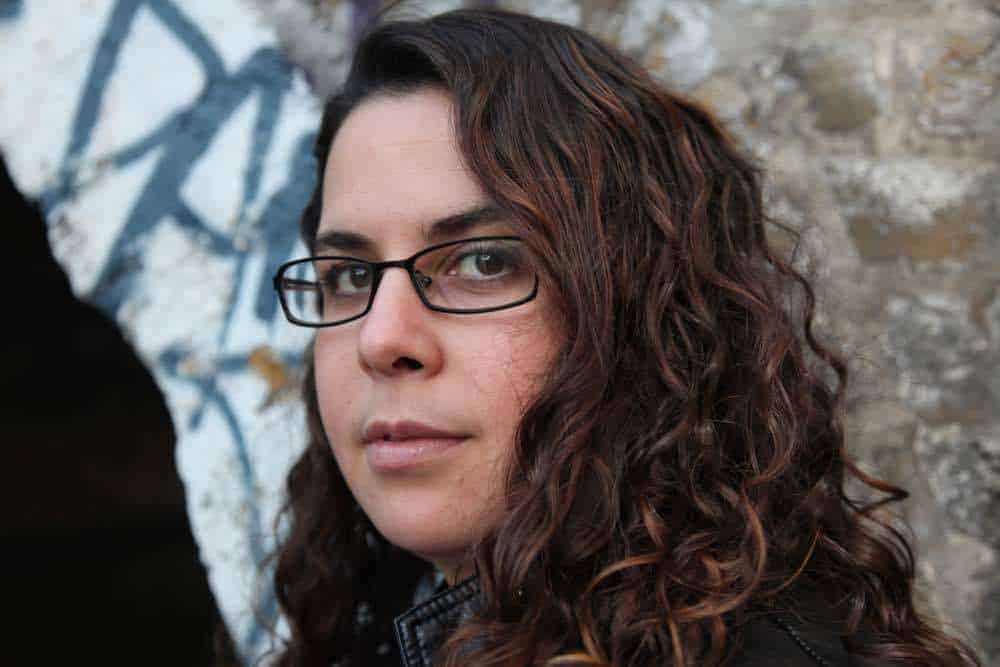
7R: So you spent a lot of time with a lot of people in that group for My Brother The Devil. That must have been difficult if it was all male, and the culture is all about performance for men.
Sally El Hosaini: Actually, I think being female really helped. I think, if I’d been a guy, there would have been more ego issues, in terms of them accepting me. My background is in documentaries, and when I set out to make this movie, I felt a bit like I don’t have the right to tell this story. Or, not really the right to tell the story, but I couldn’t hear the characters’ voices in my head when I started writing. I was like, “No, I need to get to know the real people here.” Because you can have intellectual ideas about something, which ultimately turn out to be correct, but it’s not until you’re in that world, doing the research with those real guys that you get the flavour and the texture.
I learned a new language, and I wrote the script in that language. There’s actually a glossary that went along with the script of all the urban slang, because when I was putting it out into the industry to try to get money, like producers and stuff, people couldn’t understand it, because I wrote it literally in the language. And of course, it took five years to write, so words would not be cool anymore, so I was constantly updating the script so that it was current.
I think if I’d been a guy, I think there might have been a bit more aggression. Whereas, it’s kind of such a sexist world, that women can fly under the radar. So hanging out with young guys at 3 a.m. on street corners, it’s like, she’s just background. Maybe I was interesting for the first day, and then, after that, it’s like, there are much more interesting things going on in their lives, and they’re all starring in the movies of their lives, so i’m not that interesting.
7R: There were a lot of non-actors in My Brother the Devil.
Sally El Hosaini: Mo had never acted before, the younger brother. The older brother was an actor. I was kind of worried about that — that he would really stand out. Initially, I wanted only non-actors, but I couldn’t find anybody who was a non-actor, who fit Rashid’s demographic, who wasn’t homophobic, and who was prepared to do the gay kiss. So that dream was very quickly shattered. So I then ended up thinking, “OK, I’ll have a look at some actors.” And then with James [Floyd], he worked in a really detailed method way, and that just completely connected with the way that I work, and I was just like, “actually that’s the kind of actor I need.”
He was actually really important in helping me [with] getting the performance out of Fady [Elsayed] who played Mo, as well. I didn’t want to make that much difference [between] before you call action and after you call cut, in terms of the mood of the set. So often, when Rashid and Mo were at a distance, or not getting along, which is actually the majority of the movie, James would be completely distant from him. He’d like punch him, be a bit mean. And Fady was, afterwards, was like, “Yeah, I wasn’t sure if I liked him, you know.” So there was a lot of stuff you could kind of do behind the scenes.
On the unexpected catastrophes during the shoot of My Brother The Devil— from the London riots to an uncooperative dog
7R: Because you were working with a lot of non-actors, were you trying to shoot in order for My Brother the Devil? Or was that something that budget made impossible.
Sally El Hosaini: Oh, I wanted to. And I really tried to. The budget made it impossible, and also the London riots breaking out made it impossible. We shot within Hackney, and literally, the day we were testing the camera, the day before the shoot, the riots broke out that day, while we were out — on the same street we were on, actually. So there were helicopters in the sky and groups of guys coming down the street, smashing things up. The police were coming out in force. The producers were on the phone, like, “get off the street, the equipment isn’t insured.” I was like, “Oh, gosh, typical. Riots break out across London right when I’m about to finally, finally start shooting.”
And it affected the shoot. There was this London-wide decree that basically said you’re not allowed to shoot any scenes with young guys being aggressive on the streets of London for the entire summer, because they were afraid it would incite more riots: people might mistake it for real life. And we were really stuck so I had to do a lot of last-minute rewrites. Like, the tattoo parlour scene used to be exterior, and I had to set it in a new space interior. That was a success story because it was like, you put these limitations on yourself, and actually, the tattoo parlor scene was better than what I had initially wrote. So that was a good one.
But then the scene where Izzi dies, that was a bit traumatic, because there was no way I could relocate that because of how everything had played out to get the different characters there. There was no way it could be indoors. And I couldn’t think of a way. So we ended up having to find a studio set in London. All of the big productions had bagged all of the best London street sets so literally, the only one we could afford and find, was like a little old country village with a really cute pub with flower baskets and everything was in pastels and like cobbled. It was just so cute or quaint, like Miss Marple. I remember feeling like , “No, how are we going to do this?” And we could only afford it for one night, instead of two nights, which is what we had scheduled for that big scene, and in the UK it gets dark very late in the summer. So we only had a really tiny number of hours of darkness to shoot it all in. And everything conspired to go against it. But the production designer and his team, the art director, was just amazing. They transformed it. They boarded everything up. They distressed everything very quickly. They had bags of rubbish, and suddenly it looked like Hackney. We didn’t even have time to move a light, because that was how precious the time was. That had to be lit, because obviously it was a lot, so we just had to have pre-set everything, and literally just turn lights on and off and sprint.
The dog, as well. We were supposed to do everything where the dog is calm first, because we could only afford one dog, and then do the aggressive dog. But we got a phone call from the animal handler before we arrived saying, “I’m really sorry, but there’s a fire in my van that’s broken out, and now the dog is really angry, so you’ve only got angry.” I’ll never forget how when we were doing “dog needs to be calm.” the whole set, everybody was there just being completely silent and calm. The atmosphere was incredible. Everyone was just willing this dog to lie down and play dead. He kept jumping up.
On preparing for the shoot of the film and working with non-actors and creating a comfortable space for them to be vulnerable
7R: Did you do any rehearsals for My Brother the Devil?
Sally El Hosaini: I don’t like to rehearse non-actors. It’s all about keeping it spontaneous and in the moment so that they can just be and not over-think it. Trying to make a really relaxed environment — we had quite a small crew — so that they’re just comfortable to be vulnerable, really, and it’s just a safe space, so it doesn’t feel like acting — acting with a capital ‘A,’ and with a spotlight on them.
We were in a lot of confined spaces, shooting scope, so we were right up close. That camera lens was sometimes inches from people’s faces. You know when a lens is that close to you, if there’s any dishonesty, it’s going to show up.
We would tape up the camera light so that it wouldn’t be so clear when we were filming and when we weren’t. Sometimes, I wouldn’t be calling out “action”; there’d be a secret “action” to the crew, which goes into your prep. You design the whole shoot around how you need the atmosphere to be on set. I guess you tailor that for each film, the same way you tailor the way you work with each actor, specific to their experiences and to who they are — make it up as you go along.
I do all my prep beforehand, so that when I’m actually on set, I can just be all about the actors. The crew are completely on side and know exactly what we’re doing. Of course, there’s discussion, but pretty much, they know every single scene, what we’re in. Then, two-thirds of my time can be pulling it out of actors on the day.
7R: So if you do all your preparation beforehand, does that mean everything was storyboarded for My Brother the Devil? All the lighting is set?
Sally El Hosaini: No, but for example, this was a low budget film, so we couldn’t afford big lighting packages, but it suited the film to use mostly natural light anyway, from a creative point of view. I needed a crew that were going to be fine if an actor kicks over a light – they aren’t going to, like, flip out. And so, nothing is really rigid.
I wanted a 360 space, so that there’s just lots of freedom. David, who shot the film, his background is in documentaries, too, so he and I have that same approach, where it’s like, part of the reason I employed him was I saw in his filmmaking a responsiveness to the performance and to the actors, that sometimes you don’t always get. Sometimes the most talented cinematographers, you have almost a sheen between you and the subject, whereas David allowed his work to be imperfect. And I think there’s real beauty in imperfections. I think, when you have these perfect images, there’s something a little bit false that throws you out of it. So, the fact that he would not be like, “this is the exact shot that I have to get,’” and make the actor jump to the left, he’d move with it. You need that kind of person who’s going to be in the moment and feeling it. It’s the only way you can kind of move yourself in what you’re shooting.
The majority of the movie was handheld so you get that responsive camera, that’s really close to them. What I really wanted was the movie to feel like you throw the audience on the inside, and so you’re an insider looking out, rather than kind of being an observer, from the outside, making a judgement on this world. But really what it feels to live there, and to be really close to the brothers. I remember being on the bus when I was doing some pre-production, and seeing this kid with really bad skin, and thinking “that’s how close I want to feel to the characters, so that you can see their bad skin, their sweat, and the texture of their face, and feel very close to them, and get intimate with them.”
On the scene that made Sally El Hosaini want to make My Brother the Devil: the final scene of the film
7R: There seemed to be a lot of scenes where it felt like the characters were walking a long distance across the frame, even if it was really 3 metres, like when Rash walks away from Mo near the end, and also at the hospital. It seemed like a recurring motif. Is that something that you had thought about beforehand, or that came out on the fly? Or you had all this footage and then decided “oh, this would be good”?
Sally El Hosaini: I think you’re probably the only person who’s observed that, so I’m really glad, and I’ve talked to a lot of people by now about the movie. So, congrats. But actually that last scene was one of the first sparks that made me want to make the movie. And to me, it’s kind of, when I was writing the script, I didn’t know anything except for that last scene. I didn’t know the story and how I was going to get there. It was all about working my way to the emotion and the feeling in the last scene.
I knew there were going to be two brothers, and that the older brother was going to walk away. It was kind of a bittersweet emotion, of like, their futures have to be apart, because the big brother’s leaving, but the younger brother is able to stand on his own two feet, and he’s going to be OK actually. That kind of goodbye to childhood, or goodbye to the phases of your life, that transition was where I wanted to end the movie. I think the parents walking away was probably an echo of that.
For me, that’s everything that the movie is about. I did the Sundance Labs with the script, and just in the development, there were a few people who were like, “Oh, why don’t you kill one of the brothers?” And I was just like, “well, I can’t do that, because the whole reason I’m making that film is for this last scene.” Everything I’ve been working on for five years has been how to get to that scene and how to earn it.
I’ve realized that’s something that, now that I’ve written a few screenplays, it’s something that’s true of every script I’ve written: I’ve always had, if not exactly known the scene, I’ve had a real emotional, visceral feel for it. I know, emotionally, the exchange that’s happening between the characters. I don’t know how I’m going to get to that last scene, but I know that last note that needs to play, and for me, [in this film,] that last note was one brother walking a way.
Another one of those things was that, when I was writing the script, I had this image of a strand of DNA in my head. I was like, Mo and Rashid, they’re like each a strand on the helix, and they’re lives twist and wind around each others. They’re connected but always separate and on their own paths. I was like, “Wow, that’s such an amazing visual metaphor for their relationship,” and I used that for my writing. When I was structuring my screenplay, the way that one brother hands the baton to the other, and then it kind of follows Mo, Rashid, Mo, Rashid.
I had a lot of criticism for that when I was writing the script. Not criticism, but a lot of people said, “Look, I think you should pick one brother.” Some people thought I should pick Mo. Some people thought I should pick Rashid. They’re like, “Why don’t you write a draft, just from Rashid’s perspective? And then write another draft just from Mo’s perspective.” [But] because of that last scene, and because of that strand of DNA, I was like, you know what — They were like, “for a first film, feature it around one protagonist.” There are all these rules, and I just knew, in my heart, that wasn’t what I wanted. It was about a relationship. That’s what my movie was about. It was about the sibling relationship. And I couldn’t make it just from the P.O.V. of one.
Interestingly, when you come to position the camera, you very quickly learn whose P.O.V. you really are making it from. I’d say it was like a 1.5 P.O.V.: Mo was the 1, and Rashid was the 0.5. I did have a bias towards Mo, actually, even though on the page, he was always the more passive character. Within a scene, you could barely feel him within the script, because he often just was there in the background, and didn’t say anything. But everything pivoted around him. Again, that’s something that when yo translate from script to screen, this is again, the invisible stuff that, you know, you bring to it. With the Mo bias, it was like, you’d be in the scene with Rashid, and Mo would walk in, and suddenly the whole perspective would shift, because now you were looking through Mo.
On how Sally El Hosaini made the film from Mo’s perspective 2/3 of the time
7R: So what does that mean, as far as where you’re positioning the camera in My Brother the DEvil? Are you just giving him in the foreground? Or showing from his viewpoint? Or making sure you’re always seeing his reactions?
Sally El Hosaini: It’s a combination of both. That depends on which scene, specifically. That’s filmmaking isn’t it — where you put the camera. There’s no answer. For us, with this, because I wanted it to feel like we were on the inside looking out, that often meant we were literally subjectively seeing things and feeling things the way we would. So I was very much into interpreting through the senses — having moments where he would touch something, or close-ups, or the way the sound is, as well, sometimes going into a more subjective realm, using a bit of the slo-mo, and things like that, to emphasize moments [and] to play with the speed of things slightly.
On the four shooting rules Sally El Hosaini developed with her cinematographer David Raedeker, which include “no establishing shots”
7R: You mentioned that a lot of it was shot handheld, but there’s still a lot of these beautiful composition shots of all these landscapes. I think there’s one of the playground.
Sally El Hosaini: We were very careful with those. We actually made these shooting rules, which was part of our prep. Myself and the cinematographer sat down, and we made up four rules for what we would not shoot. One of them was no establishers: no shot that establishes the geography or the space. It doesn’t mean no wide shots. So when we used those wides, it was really to tell a story within a frame. For me, those playground sequences — besides Mo being a kid who’s a bit too big to actually play —whenever I would spend time on a lot of these estates, they all have this constructed play area for the little kids. And you have all the teenage kids just sitting on them, and hanging out on them.
And there is this symbol of childhood, of him outgrowing childhood, but then there’s also the boredom. There’s a moment where time passes where he’s just hanging out on his own. There’s the loneliness that actually nobody plays on them. Something I really wanted to show was that boredom, because that’s where a lot of this stuff comes from. A lot of the issues and the fighting and the drama in their lives, comes out of the fact that there’s nothing going on. Having that sense of nothingness, that’s why the play areas — more than wanting to make it a beautiful film. We were very strict with ourselves about the meaning of why and when we used those shots.
Some of the other uses for filming were, there were four rules. One was the 1.5 P.O.V. that I already mentioned. One was no establishers. One was that everything would be experience-driven or subjective, so again, that comes to your question about does that mean that Mo is in the shot or are we experiencing it as him. I guess the P.O.V. is that he’s there, in there, and we’re reading how he’s responding and interacting with it. The subjective-experience-driven would be through his senses almost, and that would be in the subjective style of where we would shoot, depending on where he was at emotionally. Or Rashid, for that matter.
The final rule was just simplicity, because ultimately it’s the greatest art form. You can kind of clutter things. So just removing elements is always the most interesting thing. That’s the whole filmmaking process for me from the beginning. My scripts are always huge, cluttered things, and then the whole process is a process of simplification to one image, one moment, one look. I guess the thing you’re always fighting against is redundancy. I find it all the time in my work, and I’m always trying to battle it. You feel like you’ve said things so many times in different ways. And once is enough. In fact, it dilutes the power of it when you do do that. So you’re always trying to remove those redundant moments and things in the frame, and really focus it, so that it’s pure.
I used to write a lot of poetry. For me, filmmaking is connected to poetry more than it’s connected to anything, because in poetry, it’s all about the fewest words to express just that one image. And that’s filmmaking. You can do it without words better than you can do it with words. You’re always striving for that simplicity.
7R: Are you developing a script now for another films?
Sally El Hosaini: Yeah, I am. Actually, I’m working on a Bay Area story, which is part of why it was great synchronicity for me to come to be the artist-in-residence in San Francisco. I’m working on a script that tells the story of Jonestown, so it’s based on a true story. It’s very in the DNA here.
